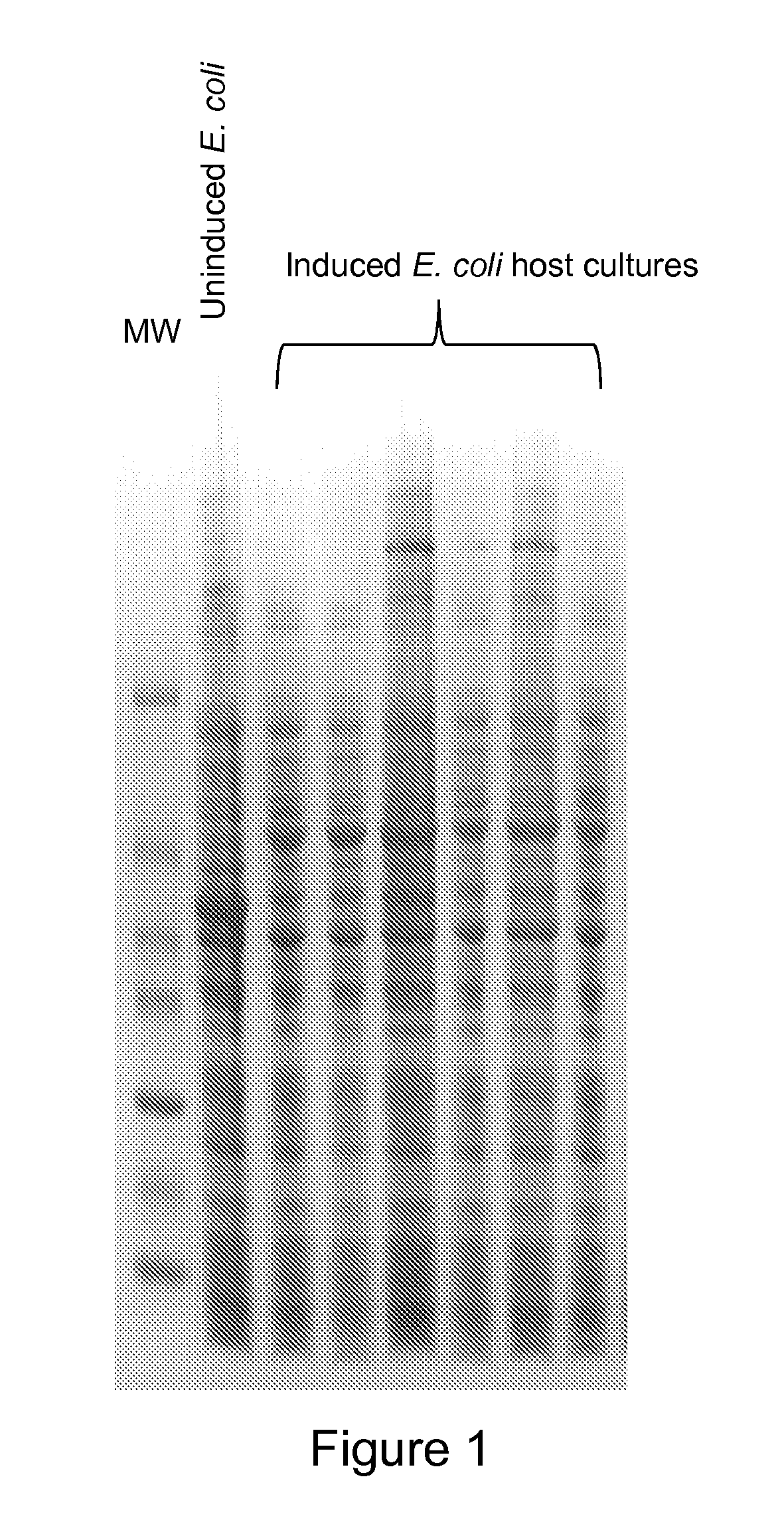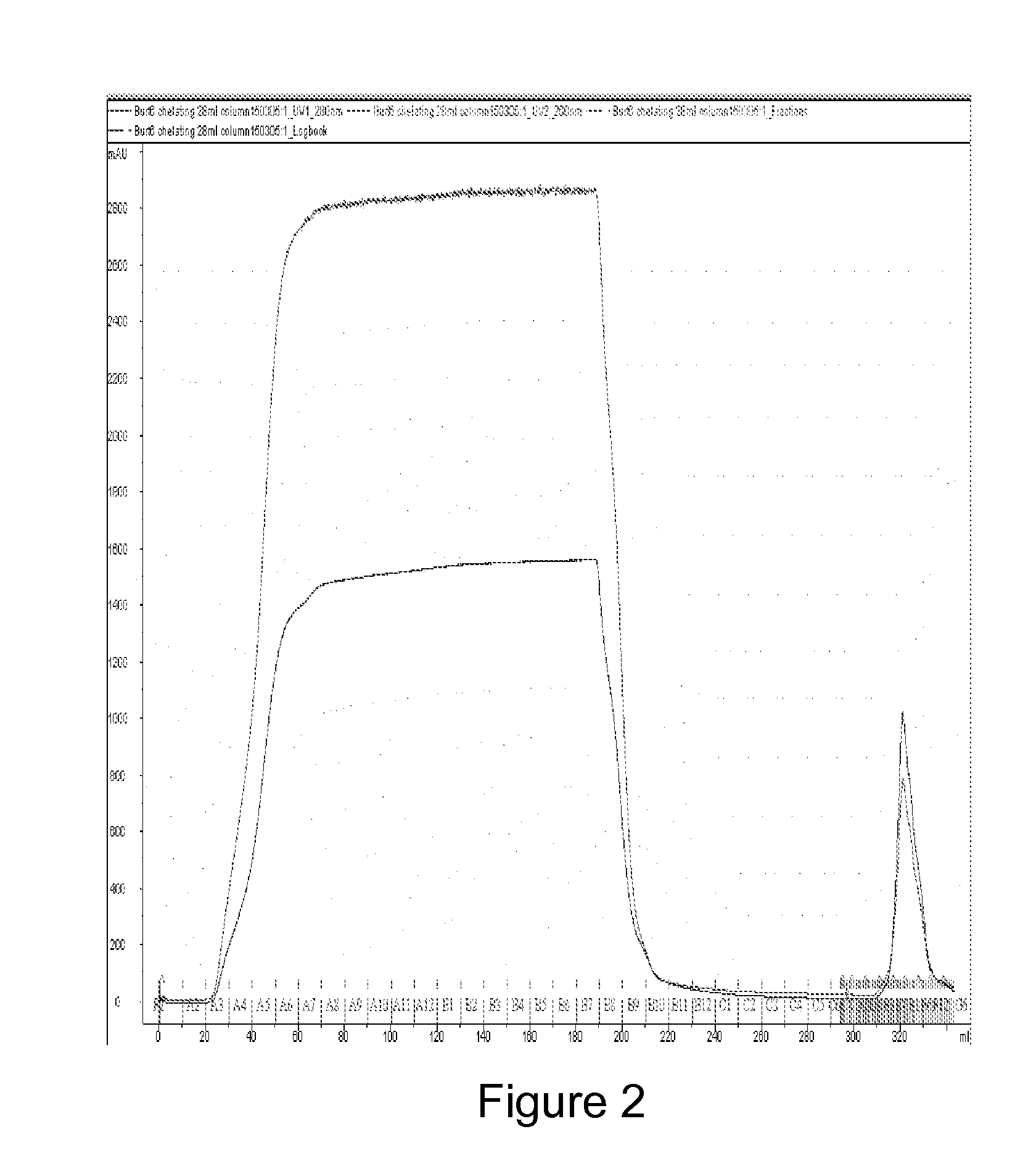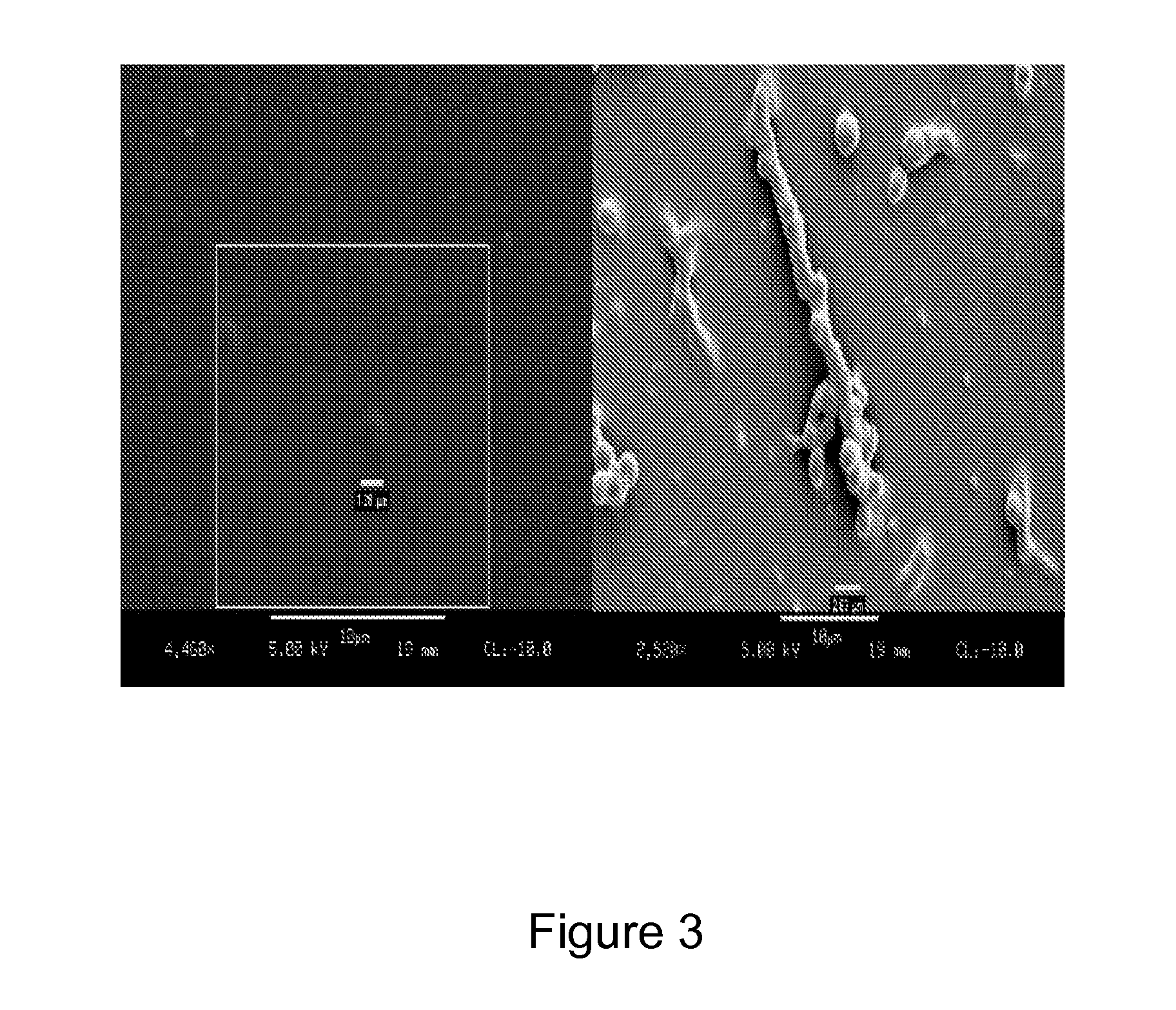Tropoelastins and uses thereof
- Summary
- Abstract
- Description
- Claims
- Application Information
AI Technical Summary
Benefits of technology
Problems solved by technology
Method used
Image
Examples
example 1
Cloning and Sequence Analysis of Tropoelastin Isoforms
[0247]Genetic Analysis
[0248]Four non-fetal skin fibroblast cell lines from healthy donors were purchased from the Corriel Institute for Medical Research. Total RNA was extracted from the four cell lines. cDNA was synthesized from the RNA using reverse transcriptase, and the cDNA was amplified using PCR with specifically designed primers. The amplified DNA was then ligated into a plasmid and transformed into Escherichia coli (E. coli). Colonies containing the cloned cDNA were picked and the size of the inserted cDNA determined. Only colonies containing full length inserts were further evaluated. The cDNA was isolated from the host and subjected to full length DNA sequencing. A total of 96 distinct cDNA clones were sequenced.
[0249]A comparison of the sequences revealed that a total of 34 separate tropoelastin polymorphs were present in the mRNA from 4 human cell lines. A detailed polymorphism analysis of tropoelastin mRNAs obtained...
example 2
Design of Tropoelastin Gene for Optimization of Protein Expression
[0251]Tropoelastin Gene Optimization and Design
[0252]The sequence of the human tropoelastin gene was originally published in 1987 (Indik et al. P.N.A.S. USA (1987); 84: pp. 5680-5684.). The gene encoding tropoelastin is large, spanning more than 41.5 kilobases and contains an extensive number of tandem repeated nucleotides. Moreover, the codon usage of the tropoelastin gene is highly biased toward expression in human cells. All of these factors contribute to the difficulty of successfully synthesizing this protein in alternative hosts. As a result, attempts to express the human gene in E. coli have largely been unsuccessful and yield only small amounts of tropoelastin protein (Indik et al. Arch. Biochem. Biophys. (1990); 280: (1): pp. 80-86).
[0253]The highly biased codon usage in the human tropoelastin gene interferes with assembly of the protein during translation, because the necessary tRNA molecules are not abundan...
example 3
Expression of Tropoelastin Protein
[0259]Gene Synthesis and Expression
[0260]A codon optimized version of a human tropoelastin coding sequence, e.g., SEQ ID NOs: 84-86, was synthesized and was used to efficiently produce human tropoelastin, e.g., SEQ ID NOs: 47-48, in alternative hosts such as bacteria, yeasts and plants. The correct DNA sequence for the optimized tropoelastin polynucleotide was confirmed by sequencing, the optimized tropoelastin polynucleotide was ligated into an E. coli expression vector, and the optimized tropoelastin polynucleotide containing expression vector was transformed into E. coli. Several clones of the E. coli transformant were cultured, induced to express protein, and harvested. The expression of tropoelastin was analyzed by SDS PAGE. FIG. 1 shows that when the codon optimized version of the human tropoelastin coding sequence was expressed in E. coli, tropoelastin was efficiently expressed in the cell. The efficient expression of the optimized tropoelast...
PUM
| Property | Measurement | Unit |
|---|---|---|
| Fraction | aaaaa | aaaaa |
| Shape | aaaaa | aaaaa |
| Biocompatibility | aaaaa | aaaaa |
Abstract
Description
Claims
Application Information
 Login to View More
Login to View More - R&D
- Intellectual Property
- Life Sciences
- Materials
- Tech Scout
- Unparalleled Data Quality
- Higher Quality Content
- 60% Fewer Hallucinations
Browse by: Latest US Patents, China's latest patents, Technical Efficacy Thesaurus, Application Domain, Technology Topic, Popular Technical Reports.
© 2025 PatSnap. All rights reserved.Legal|Privacy policy|Modern Slavery Act Transparency Statement|Sitemap|About US| Contact US: help@patsnap.com



